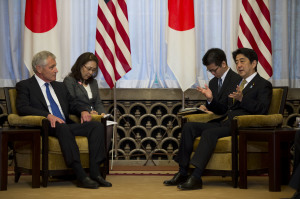Abe: Japan’s New Statesman?
In his latest for Global Asia, the Council on International Policy’s J. Berkshire Miller writes about Japanese Prime Minister Shinzo Abe’s ambitious diplomatic drive to reassert Japan’s global influence.
[opinion/analysis] Since Japan’s Prime Minister Shinzo Abe was elected in late 2012, he has embarked on an ambitious travel agenda. In 20 months as prime minister, he has visited nearly 50 countries – more than a quarter of the globe. While his travels have been varied, the most concentrated efforts have been in East Asia – where Abe has toured all 10 countries of the Association of South East Asian Nations (ASEAN). The obvious exceptions in East Asia have been South Korea and China – with which Japan’s ties have soured considerably during Abe’s tenure.
Abe’s foreign policy push seems to legitimize his declaration that “Japan in back,” which is aimed at debunking concerns, mainly in Washington, that Tokyo’s global influence was slipping. And, to be sure, there is a strong economic impetus for Abe’s travel schedule. For example, he has looked to engage in “nuclear diplomacy” with Turkey and several Gulf states in order to convince these states that Japan’s nuclear industry should provide them technical expertise and help construct new power plants. Of course, Abe’s push internationally on the nuclear front – which partially aims to repair the image of Japan’s nuclear industry at home – also works to reinforce his domestic policy aimed at restarting Japan’s idle reactors. All nuclear reactors in Japan have been offline since the Fukushima Daiichi disaster in 2011, but it appears that the first reactors will go back online this month.
Related posts:
Category: FOREIGN POLICY & SECURITY, SOUTH ASIA & ASIA PACIFIC





